A new media without animal component for sperm cryopreservation: motility and various attributes affecting paternal contribution of sperm
- PMID: 28281145
- PMCID: PMC5427647
- DOI: 10.1007/s10815-017-0888-4
A new media without animal component for sperm cryopreservation: motility and various attributes affecting paternal contribution of sperm
Abstract
Purpose: Our aim was the development of a safe sperm cryopreservation New Media (NM), composed of consistent and reproducible components devoid of any animal origin, and evaluation of NM in terms of its effect on sperm structure and function as compared to regularly used yolk media (TYM) (Irvine Scientific).
Methods: We evaluated patient semen samples and cryopreserved them in duplicates in either NM or TYM. The samples were cryopreserved for either a short term of 1 week or long term of 1 month prior to thawing. The parameters investigated include sperm motility via computer-assisted semen analysis (CASA), sperm concentration, and sperm biomarkers that promote paternal contribution of spermatozoa to fertilization including hyaluronic acid binding, chromatin maturity, apoptotic markers, cytoplasmic retention, and sperm DNA integrity.
Results: As compared to TYM, NM was equally capable of sperm cryopreservation with both short-term and long-term storage in media, and after freeze-thaw and gradient processing of sperm. HA binding of sperm was comparable post thaw in both NM and yolk media. There are also no differences observed between the samples cryopreserved in NM or TYM in terms of their aniline blue staining, CK immunocytochemistry, caspase 3 immunostaining, or DNA nick translation.
Conclusions: NM has the advantage of being xeno-free, yet in preservation of sperm motility and other sperm attributes, the NM is as effective as the TYM.
Keywords: Biochemical markers; Cryopreservation; HA binding; Male fertility; Sperm maturity; Sperm motility.
Conflict of interest statement
Conflict of interest
The authors declare that they have no conflict of interest. Funding for the research was provided by VitroLife for evaluation of New Media.
Ethical approval
The study was approved by the Yale University IRB.
Informed consent
Informed consent was obtained from all individual participants included in the study. The patient sperm samples were de-identified prior to the initiation of study.
Figures

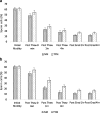
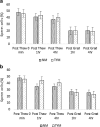
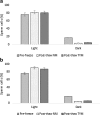


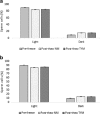
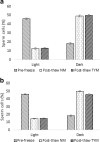
Similar articles
-
Retained functional integrity of bull spermatozoa after double freezing and thawing using PureSperm density gradient centrifugation.Reprod Domest Anim. 2007 Oct;42(5):489-94. doi: 10.1111/j.1439-0531.2006.00811.x. Reprod Domest Anim. 2007. PMID: 17845604
-
Cryopreservation media differentially affect sperm motility, morphology and DNA integrity.Andrology. 2018 Nov;6(6):836-845. doi: 10.1111/andr.12531. Epub 2018 Aug 13. Andrology. 2018. PMID: 30105872
-
Quantification of damage at different stages of cryopreservation of endangered North American bison (Bison bison) semen and the effects of extender and freeze rate on post-thaw sperm quality.Anim Reprod Sci. 2011 Dec;129(3-4):171-9. doi: 10.1016/j.anireprosci.2011.12.002. Epub 2011 Dec 9. Anim Reprod Sci. 2011. PMID: 22240453
-
Sperm cryopreservation: A review on current molecular cryobiology and advanced approaches.Reprod Biomed Online. 2018 Sep;37(3):327-339. doi: 10.1016/j.rbmo.2018.05.012. Epub 2018 Aug 22. Reprod Biomed Online. 2018. PMID: 30143329 Review.
-
Influence of cryopreservation on structure and function of mammalian spermatozoa: an overview.Cell Tissue Bank. 2020 Mar;21(1):1-15. doi: 10.1007/s10561-019-09797-0. Epub 2019 Dec 3. Cell Tissue Bank. 2020. PMID: 31797118 Review.
Cited by
-
Phosphatidylcholine and L-acetyl-carnitine-based freezing medium can replace egg yolk and preserves human sperm function.Transl Androl Urol. 2021 Jan;10(1):397-407. doi: 10.21037/tau-20-1004. Transl Androl Urol. 2021. PMID: 33532327 Free PMC article.
-
A comprehensive investigation of human endogenous retroviral syncytin proteins and their receptors in men with normozoospermia and impaired semen quality.J Assist Reprod Genet. 2023 Jan;40(1):97-111. doi: 10.1007/s10815-022-02673-z. Epub 2022 Dec 5. J Assist Reprod Genet. 2023. PMID: 36469256 Free PMC article.
-
Sperm parameters that play a major role in the assessment of semen quality after cryopreservation.J Assist Reprod Genet. 2017 Oct;34(10):1271-1276. doi: 10.1007/s10815-017-0973-8. Epub 2017 Jun 17. J Assist Reprod Genet. 2017. PMID: 28624858 Free PMC article. No abstract available.
-
Human sperm parameter improvement associated with Ceratonia siliqua extract as a cryopreservation supplement after vitrification.Clin Exp Reprod Med. 2023 Jun;50(2):86-93. doi: 10.5653/cerm.2022.05554. Epub 2023 May 11. Clin Exp Reprod Med. 2023. PMID: 37258101 Free PMC article.
References
-
- Rosen A. Third-party reproduction and adoption in cancer patients. J Natl Cancer Inst Monogr. 2005;(34):91–3. - PubMed
MeSH terms
Substances
LinkOut - more resources
Full Text Sources
Other Literature Sources
Research Materials

